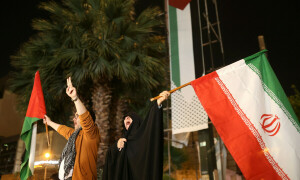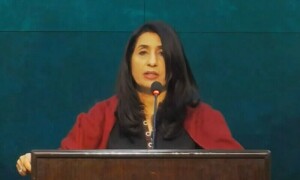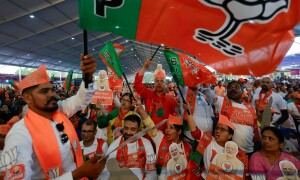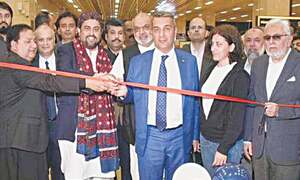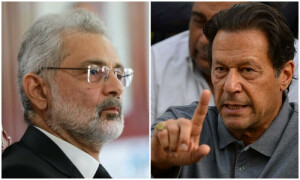THE policies and actions of the State Bank of Pakistan (SBP) with respect to the management of the rupee exchange rate and the country’s foreign exchange reserves are interlinked.
In the case of the latter the level is important for a cushion that is required to address issues pertaining to the financing of the current account, the risks to cash flows for the timely servicing of our obligations and the interventions required in the foreign exchange markets to avert the adverse effects of any unexpected movements of capital.
Our external situation is delicate not only owing to the weak economic and financial situation but also because of our historical heavy dependence on non-durable flows of external capital (mainly from bilateral donors or multilaterals such as the World Bank and the Asian Development Bank) to finance the current account deficit. These capital flows have historically enabled us to not only run large current account deficits but also maintain foreign exchange reserves at comfortable levels.
However, our current account deficit today is not because of higher domestic investment financed by foreign capital inflows to meet the shortfall in domestic savings. And this gap between domestic savings and investment is now being filled not by inflows of long-term capital from the donors identified above (by the end of June there will be a net capital outflow to them of more than $500 million) or foreign direct investment (FDI) — by multinational corporations and those in the telecom, banking and oil and gas sectors, etc. — but by risky, volatile foreign portfolio investment in the stock market; in fact, FDI is unlikely to grow sharply in the foreseeable future given the country’s image, bureaucratic red tape, governance and corruption issues that get widely mentioned in international markets.
This factor and the widening differential between the higher rate of our domestic inflation and that of our trading partners/competitors have resulted in the rupee being over-valued in real terms. And in the determination of the relevant exchange value of the rupee the real effective exchange rate (REER) studiously monitored by the SBP is not the appropriate indicator of the competitiveness of our exports. For instance, our competitor in exports of textiles and garments is Bangladesh but because our trade with Bangladesh is rather small the taka has a low weight in the basket of currencies that make up the REER — thereby failing to correctly reflect the competitiveness of Bangladeshi exporters in the markets of other countries.
The important fact is the currency of invoicing and not the destination of trade. The importer in the UK, the US or China, etc, decides on the source for the product using the price of the same item from different countries in the same currency, for example the dollar. In other words, since an excess of 80pc of our trade is in US dollars, it makes more sense to look at the real exchange rate against the dollar.
The SBP has hitherto adopted a somewhat risky strategy to defend the exchange value of the rupee. It has sold close to a billion dollars in the exchange markets since January, despite the wobbly position of the reserves. This factor, the servicing obligations of the external debt, the large oil bill, the waning increase in the growth of exports as a result of a slowdown and growing uncertainty in global markets, inadequate and feeble inflows of capital from the donor community or volatile capital inflows in the form of foreign investment in the stock market have all contributed to the issues of funding the current account deficit (even though it is less than $1.8 billion, or around 1pc of GDP). This has led to the resulting worrying decline in the level of the exchange reserves to under two months of imports, even after including the $2.7bn that the SBP has ‘borrowed’ from the commercial banks.
The solution to the financing of the current account deficit does not lie in anticipating capital flows, borrowing short-term money in the garb of ‘foreign currency swaps’ with China, etc, but in raising our exports, shifting the current policy bias in favour of import substitution to exports and improving productivity through better access to technology and public and private investment in high-quality education and technical and vocational skills. This is the minimum that will need to be done if we are to break the begging bowl for funds to finance the current account deficit on a sustainable basis.
In this writer’s view, the size of the current account deficit depends on the exchange rate, because the external value of the rupee affects the trade and current accounts and indirectly domestic production and savings. And in our case, the current account deficit is the result of the deficit on the trade account which, in recent years, has been in excess of $16bn per annum with 70-odd per cent of it being financed by the remittances of overseas Pakistanis.
In my opinion, the exchange rate is much more important than incentives to exports in the form of low interest rates, rebates, duty drawbacks or dubious subsidies such as those under the cover of research and development, etc. We should, therefore, consider a) controls over the movement of capital (at the moment we have none of any significance, SBP regulations on conversions to foreign currency and their transfers abroad are rather lax because of an ill-advised statutory/ Constitutional protection provided to such activities) and b) managing the exchange rate such that the external value of the rupee is around a level which would keep the current account deficit to below 1pc of GDP — so that this gap can be financed from normal and regular capital flows.
If we desire a stable rate of exchange of the rupee we need to ensure its stable domestic value through better control over inflation (with a complementary monetary policy stance of the SBP) and policies that incentivise rapid improvement in productivity. Otherwise, a stable exchange rate will remain an elusive and moving target.
The writer is a former governor of the State Bank of Pakistan.
























